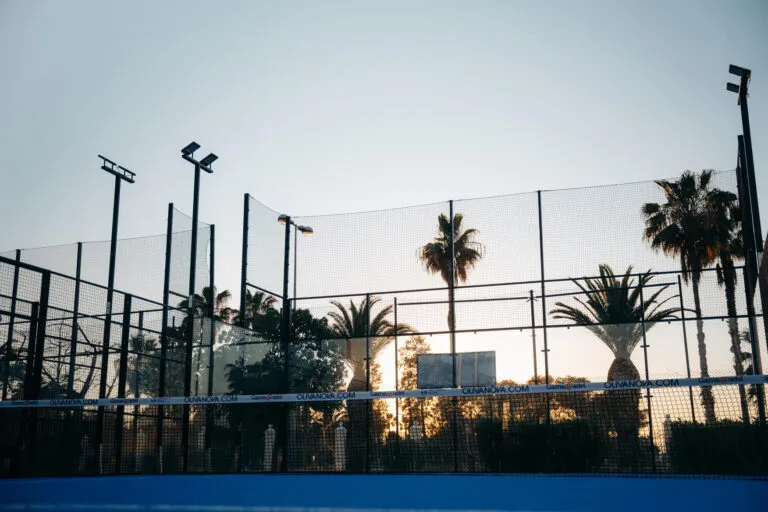

Padel and Tennis A Comparative Analysis of Two Thriving Racket Sports
Racket sports have long captivated sports enthusiasts, and among the many variations, padel and tennis stand out for their unique characteristics and growing popularity across the globe. While both sports share similarities, such as the use of rackets and courts, they also feature distinct differences that appeal to varying audiences. In this article, we will explore the origins, rules, playing styles, and social aspects of both padel and tennis, providing a comprehensive comparison of these two dynamic sports.
Origins and Evolution
Tennis traces its origins back to 12th-century France, where a game called jeu de paume (game of the palm) was played. It evolved over the centuries, culminating in the modern game we recognize today, which was officially codified in the late 19th century. The establishment of the Wimbledon Championships in 1877 marked the beginning of professional tennis, and the sport has grown exponentially, with millions of players and fans worldwide.
Padel, on the other hand, is a relatively new sport, having been created in 1969 in Mexico. It combines elements of tennis and squash and is typically played in doubles on an enclosed court. The sport has surged in popularity since the 1980s, especially in Spain and Latin America. Its rapid growth can be attributed to its accessibility and the social environment it fosters. Padel courts are often constructed in urban areas, making the game easy to access for a broader demographic.
Rules and Gameplay
The rules of tennis are well-established, with matches played as singles or doubles. Players aim to hit the ball over the net and into their opponent's court, using a combination of service and groundstrokes. The scoring system includes games, sets, and matches, with players needing to win a certain number of sets to claim victory. The standard court dimensions for singles play are 78 feet long and 27 feet wide, while doubles play includes a wider court at 36 feet.
Padel, in contrast, is predominantly played in doubles, with the court being smaller than a tennis court, measuring 66 feet long and 33 feet wide. The game starts with an underhand serve, and players can use the walls as part of their strategy, leading to a dynamic and fast-paced experience. Scoring in padel generally follows the same format as tennis, but due to the nature of the court and the gameplay, rallies tend to be longer and more strategic, pushing players to focus on teamwork and communication.

Playing Style and Technique
Tennis players often require a combination of power, precision, and footwork to excel at the sport. The emphasis is on individual performance, and players use a variety of strokes—forehands, backhands, serves, and volleys—to gain an advantage. Physical conditioning is crucial, as tennis matches can be long and grueling, requiring stamina and agility.
In contrast, padel emphasizes strategy and teamwork more than raw athleticism. The enclosed court and use of walls create a unique tactical component that differs significantly from tennis. Players must work together, utilizing lobs, volleys, and wall shots to outmaneuver their opponents. The smaller court size allows for quick exchanges and requires players to think on their feet, making adaptability a key skill in padel.
Social Aspects and Popularity
Both sports have their own social appeal. Tennis has historically been associated with a more formal atmosphere, often played in clubs or public parks. Major tournaments attract large audiences, and the sport has a rich history filled with celebrated athletes like Roger Federer, Serena Williams, and Rafael Nadal.
Padel, however, offers a more relaxed and social environment. Its popularity has been bolstered by its inclusive nature, making it easier for players of varying skill levels to enjoy the game together. The doubles format encourages interaction, making padel a popular choice for social gatherings and corporate events. Additionally, the sport’s growth in countries like Spain, where it now rivals tennis in popularity, demonstrates its appeal as a community-oriented activity.
Conclusion
In conclusion, padel and tennis are two vibrant racket sports that, while sharing some elements, provide distinctly different experiences. Tennis emphasizes individual performance and physical conditioning, while padel encourages teamwork and strategic thinking. As both sports continue to evolve and gain popularity, they offer ample opportunities for enjoyment, health benefits, and social interaction, catering to a diverse range of players and fans worldwide. Whether you prefer the classic elegance of tennis or the spirited camaraderie of padel, both sports contribute to the rich tapestry of global athletics.
High-Performance Industrial Flooring Solutions China Paddle Tennis Court for Sale
High-Performance Industrial Flooring Solutions Durable & Cost-Effective
Homogeneous Transparent Floor – Durable & Stylish Rubber Floor Solutions
Premium Homogeneous Transparent Floor for Durable & Stylish Spaces Rubber Floor Solutions
Premium Sports Floor Solutions Durable PVC Sports Floor & Rubber Floor for Gyms
Durable Rubber Composite Floor Premium Rubber Floor & Mats Solutions